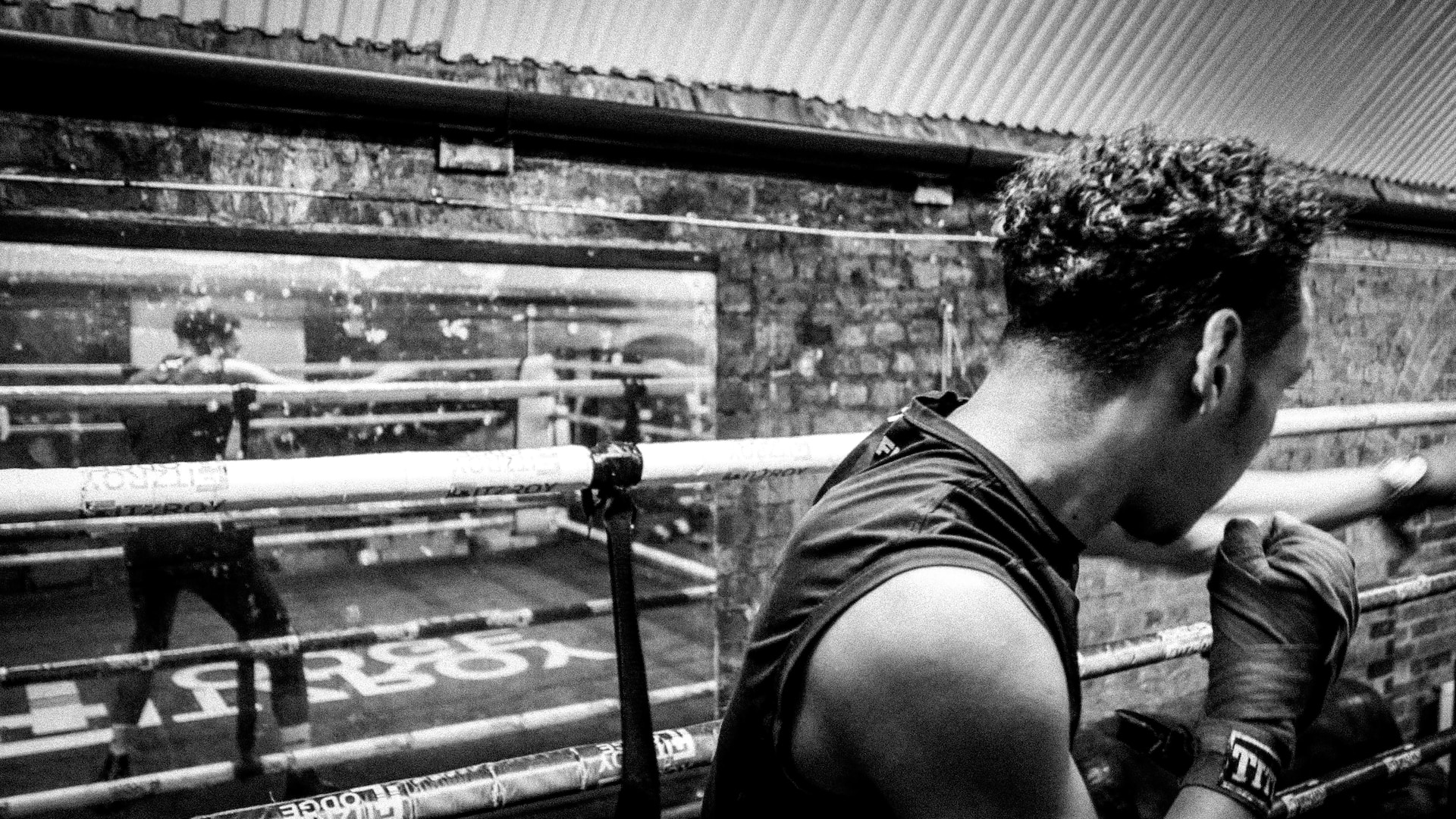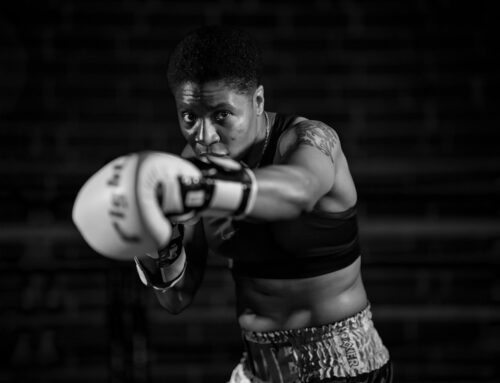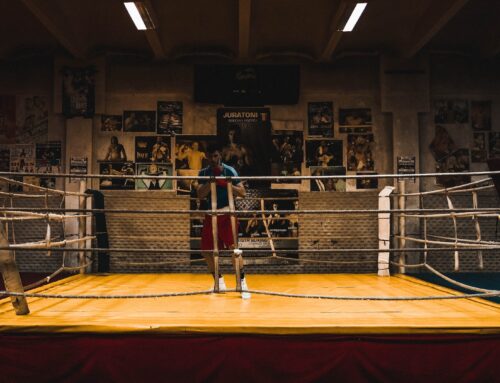Have you ever tried shadowboxing? It’s boxers’ best-kept secret, and it doesn’t get the recognition it deserves. Shadowboxing is an incredibly effective training tool for boxers, and in this article I’m going to tell you why.
Shadowboxing can help build strength, speed, endurance and coordination. It’s a great way to practice technique without the added pressure of an opponent trying to hit you back. On top of that, it can help you stay on your toes because you’re not relying on someone else to provide an attack pattern for you to respond to.
But before we dive into the specifics of how shadowboxing can benefit your boxing game, let’s go over what exactly shadowboxing is and how it works.
What Is Shadowboxing?
Are you an avid boxer looking to take your training to the next level? If so, you may have heard of shadowboxing—but do you know what it is and why it’s so important?
Simply put, shadowboxing is a practice in which a boxer moves around an imaginary opponent, throwing punches while staying light on their feet. It’s one of the most effective yet underrated training tools in boxing since it helps boxers develop form and technique.
Shadowboxing often comes with several other health benefits too, like increased agility and balance. Through regular practice, you can build endurance and strength in your chest, arms, shoulders and core muscles. Shadowboxing is also great for developing coordination between your mind and body; it forces you to think ahead about which moves to make next in order to stay ahead of your “opponent”.
The best part about shadowboxing? You don’t need any special equipment—just yourself!
Benefits and Advantages of Shadowboxing
When you think of boxing, you likely think of heavy bags and sparring with an opponent. But what about the overlooked training tool that offers a multitude of benefits for boxers? That’s right, we’re talking about shadowboxing!
Shadowboxing is a great way to warm up your body, improve your coordination and footwork, and practice combinations while building conditioning and mental focus. Here are just some of the advantages of shadowboxing:
- It’s free to do — all you need is your boxing gear and yourself.
- You can practice anywhere, anytime with no partner needed.
- You can loosen up before a fight by practicing your punches in all directions at different angles to increase flexibility and range of motion.
- You can visualize how you want the fight to go by mimicking certain moves and scenarios.
- You can perfect punches like jabs, hooks, uppercuts and body shots to increase power in those areas.
Whether you’re just getting started in boxing or have been doing it for years, adding shadowboxing into your routine will make a big difference in your training!
Tips for Effective Shadowboxing
Shadowboxing may be the most underrated training tool in boxing, but if done correctly, it can be extremely effective. Here are a few tips to shadowbox like a pro.
Get into Position
Before you can start shadowboxing, you need to get in your stance. Make sure that your body is facing forward with your chin tucked down and your fists up near your face. This will help protect you and keep you ready to throw punches while also strengthening your guard.
Form and Technique
It might not seem important when you’re alone in the gym, but good technique and clean form are essential with any exercise. Make sure to practice proper technique when throwing each punch—from the jab to the hook and uppercut—to make sure that you’re getting the most out of this training tool. Keep in mind that slow and steady wins the race here; go slow enough for each punch to be well-formed before adding speed and power.
Visualization
Once you’re comfortable with your form, use visualization exercises to sharpen your mind as well as physical training exercises to hone your body instincts. Visualize yourself inside a ring throwing powerful punches at an imaginary opponent; it’s not just about how much strength you have, but rather how effectively you can use that strength on an opponent. Imagine yourself landing clean shots on them and moving around them with grace—this will help develop speed as well as accuracy in throwing punches effectively during sparring or actual bouts.
Common Mistakes Made When Shadowboxing
Those new to shadowboxing often underestimate the importance of proper form in their training. This can lead to serious injuries and chronic pain, both of which are detrimental to your progress as a boxer. So what should you be mindful of when practicing shadowboxing?
Not Relaxing Your Shoulders
The most important thing to remember is keeping your shoulders relaxed. When you’re shadowboxing, your arms should move freely in all directions without too much tension in the shoulder area. Tight shoulders will limit your range of motion and can lead to muscle pulls and strains.
Not Paying Attention To Footwork
Another common mistake is not paying enough attention to footwork when shadowboxing. Good footwork is essential for any boxer; it gives you the mobility, balance, and agility you need in the ring, and it’s no different when you’re practicing shadowboxing. Remember to keep your feet light but firm on the ground and maintain a focus on quick movements with a low center of gravity.
Not Including Punches
Finally, some inexperienced boxers forget to incorporate punches into their shadowboxing routine. You should be working on your punches as much as possible—focus on punching with speed and power by combining combinations with movement and footwork drills.
To become a better boxer, it’s essential to stay aware of common mistakes made during shadowboxing such as tight shoulders, lack of attention to footwork, and not incorporating punches into practice sessions. Staying mindful while you’re training will help ensure that you get the most out of your workouts without putting yourself at risk for injuries.
Gear and Equipment Needed for Shadowboxing
Shadowboxing is one of the oldest and most important training tools in boxing, but it only really requires a few simple items. In fact, you don’t even need to step into a boxing gym to practice—here’s what you need to get started:
Gloves
Lightweight gloves are the perfect partner for shadowboxing, as they offer protection and help keep your hands safe. Also, make sure your gloves fit properly—not too tight or too loose. If you want to get extra fancy, you can consider investing in some thai-style gloves that come up to your elbows and offer even more protection.
Wraps
Hand wraps provide an extra layer of protection for your hands, so it’s a good idea to get familiar with this before starting out. Don’t forget that the wraps should be snug but not too tight—if you wrap them too tightly it can reduce circulation in your hands and cause injuries.
Trainer/Coach/Training Partner
You don’t necessarily need someone else, but having someone around when you’re shadowboxing gives you a heads-up if there’s something wrong with form or if something needs to be adjusted. Plus, having another person there helps motivate you like no other!
If you don’t have access to any of these items (or a trainer), then don’t worry—you can still practice on your own without them and reap the benefits of shadowboxing!
Making Shadowboxing Part of Your Workout Routine
When it comes to boxing, shadowboxing is a seriously underrated training tool. It’s easy to think that shadowboxing doesn’t give you the same physical and technical benefits as hitting a bag, or sparring with an opponent—but that’s not true at all.
Shadowboxing is actually incredibly helpful when it comes to developing your technique and building up strength. Here’s why you should incorporate shadowboxing into your regular boxing workouts:
Visualization
One of the great things about shadowboxing is that it allows you to really visualize what you’re doing. This helps improve your accuracy and form, as well as timing, so that when you do hit a bag or spar with an opponent the performance will be improved.
Strength Training
Shadowboxing is also great for building muscle — and fast! If you have trouble with increasing speed and power when hitting a bag, then shadow boxing can be beneficial for improving your overall strength. Shadowboxing engages every muscle in the body and really helps to tone them up too, plus it increases flexibility and coordination as well.
No Equipment Needed
Finally, another great reason why you should incorporate shadowboxing into your regular workouts is because no equipment is needed — which means it can easily be done anywhere at any time. This makes it easier to fit into a busy schedule or while traveling. Plus, since there’s no risk of injury with this one either, you can train harder without worrying about getting injured.
So if you’re looking for a new way to improve your boxing skills and get in shape, then make sure to add shadowboxing into your regular routine — you won’t regret it!
Shadowboxing can be an invaluable tool for boxers of all levels of experience, helping to hone skills that can be adapted to the ring and improving overall hand-eye coordination. With the right form and consistent practice, shadowboxing can be a great way to practice footwork, defensive tactics and movement.
Whether you’re a starting out or a seasoned fighter, you can benefit from the many advantages of shadowboxing. With its versatility in training, shadowboxing is sure to be a staple for boxers for years to come.




